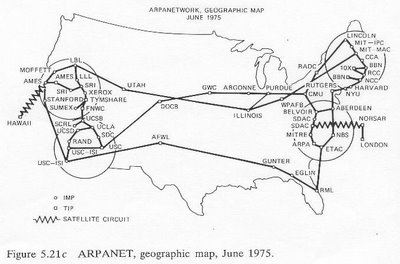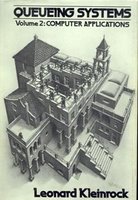PHOTO: (click on photo to enlarge) A star Oregon State University basketball player, Tres Tinkle, is shown with his mother and says he is not ashamed to call himself "a momma's boy," as quoted in a student newspaper article by Josh Worden, "2016 Mom's Weekend -- A family affair: Basketball star Tre Tinkle and his relationship with his mom. The tight-knit Tinkles, Tres Shares a close relationship with his mother, Lisa Tinkle," Barometer, Apr. 29, 3016, p. 1, 7. This article was part of a special issue printed for distribution to the parents of OSU students attending the annual OSU tradition, which dates back to 1924, of having the mothers of OSU students visit campus during a special weekend, which is described in the lead story by Lauren Sluss, "Welcoming Moms and Family. OSU Mom's and family weekend kicks off Friday, runs through Sunday," Barometer, Apr. 29, 3016, p. 1, 3-4 posted online as "Moms & Family Weekend at OSU starts today".
The popularly used word "gaydar" (see Google definitions) is a portmanteau of gay and radar referring to the intuitive ability of a person to assess others' sexual orientations as gay, bisexual or heterosexual (See Gaydar article on wikipedia.org).
Before gay rights activists came out publically after the Stonewall riot in 1969, most people stereotyped gay men as being effeminate queens and gay women as being masculine butch dykes. The gay rights movement for equality strived to break down these stereotypes by providing examples of masculine men who were gay, such as the Hollywood movie star Rock Hudson and the femme TV star Ellen DeGeneres. This strategy helped to open minds, but it also unintentionally pressured effeminate gay men to act "more straight" and butch lesbians to "act more girlish."
I don't know if it is just a sign of the times, or if actual gaydar signals were being sent out by the star Oregon State University basketball player, Tres Tinkle, when he freely admitted to being a "a momma's boy," in the student newspaper article by Josh Worden, "2016 Mom's Weekend -- A family affair: Basketball star Tre Tinkle and his relationship with his mom. The tight-knit Tinkles, Tres Shares a close relationship with his mother, Lisa Tinkle," Barometer, Apr. 29, 3016, p. 1, 7.
Only a half century ago, Freudian psychiatrists blamed mothers for making their sons gay by being too close to them, while the boy's father was absent either emotionally or physically. Tres Tinkle's story fits these old textbook cases of an overbearing mother being emotionally close to her gay son, while the father is away working elsewhere, and therefore, most people back then would have read Tres' story as him admitting to being gay.
The reason I ask if these gaydar signals are real, or if they are just a sign of the times, is because in my experience most young men today are less encumbered by the old stereotypes of the past (e.g. the idea that only a gay boy can be close to his mother) because they have been raised in a world where both feminists and gay activists have opened up people's minds to the differences between sexual orientation and gender identity in order to help break down the misogynistic stereotypes surrounding women.
In any case, Tres Tinkle provides a good role model for young men by showing that they can show their softer sides without having to worry about being labeled as gay.
Below are some quotes from the article:
Tres Tinkle may be playing for his father Wayne (Tinkle basketball coach) at OSU, but he's also got a close relationship with his mother, Lisa . . . It was Tres and Lisa, after all, who lived together during Tres' senior season of high school basketball in Missoula, Mont., while Wayne was busy building a program in Corvallis . . . it was just mother and son. . . . Both Tres and Lisa valued their time together in Missoula, but it wasn't as if they weren't close already. Though Wayne never coached Tres until college, Tres' third grade YMCA team coached by Lisa won the league championship. Lisa was home more often throughout Tres' childhood, and Tres could tell she would be the more emotional parent of the two if he chose to attend college far away. . . Tres, who is not ashamed to call himself "a momma's boy," is still able to enjoy the fruits of being a son while at OSU. While most of his teammates at OSU don't have the privilege of seeing their family often, Tres doesn't take for granted how close his parents still are: even during the season he would drop by his parents' house for dinner as much as twice a week. . . Lisa is still completely capable to spoil Tres: since she still has a copy of Tres' car key, she surprises him by leaving some desserts in his car on the occasional weekday morning. . . She scored 1,470 points and grabbed 830 rebounds while playing at Montana. As much basketball success and experience as Lisa has, though, she lets Wayne do most of the coaching. . . "Wayne's a tough coach. He'll yell and scream, and it's tough to get used to that," Lisa said. "Hearing that from his dad, (Tres) needed someone to vent to, and that someone would be me. But that's really all I can do. I have trust in what Wayne does with his freshmen. You have to break them down before you build them up and start good habits. I just said, 'you have to trust the process and trust your father. Everything will be alright.'"
(Quoted from Josh Worden, "2016 Mom's Weekend -- A family affair: Basketball star Tre Tinkle and his relationship with his mon. The tight-knit Tinkles, Tres Shares a close relationship with his mother, Lisa Tinkle," Barometer, Apr. 29, 3016, p. 1, 7)





